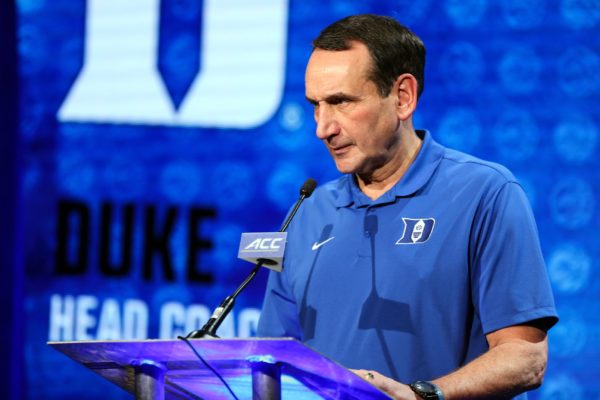On the Predictive Power of Top 10 Rankings…
Posted by Will Ezekowitz on November 8th, 2016The college basketball season is right around the corner, but all we have to amuse ourselves until tip-off this Friday night are the myriad published projections and preseason polls. I am a big fan of preseason polls, and have written extensively in the past about both their predictive power and their biases. This year I decided to focus on the preseason and postseason top 10s (note that only the USA Today/Coaches Poll publishes its final poll after the NCAA Tournament has completed). I was curious if there was any continuity between the two and the corresponding likelihood of a team finishing in the postseason top 10 given their inclusion in the preseason top 10.

Duke is Back in the Top 10, But the Blue Devils Didn’t Finish There Last Season. Does it Matter? (USA Today Images)
First, a quick note about each poll. A natural first instinct is to dismiss the preseason Top 25 as little more than idle speculation, but it has proven over time to be a useful predictive tool. In a sport with relatively little year-to-year continuity, the projections of the preseason polls are useful proxies for the objective talent of a team, which is notoriously difficult to quantify. The postseason poll (i.e., the poll taken after the conclusion of NCAA Tournament) is functionally irrelevant in college basketball, but it is a good metric of holistic season success. The Tournament exerts its weighty influence on the judgment of those teams, but it seems harsh to factor the entire perception of teams on a few games in March. The postseason Top 25 represents a season-long assessment. For example, Michigan State, a strong #2 seed that many pundits and fans alike projected into the Final Four, shockingly lost to #15 seed Middle Tennessee State in the First Round. The Spartans were therefore ranked seventh in the postseason poll, which ultimately felt about right.
To use an example of this line of inquiry, Final Four participant North Carolina was ranked fourth in the 2007-08 postseason poll and subsequently started the 2008-09 season first in the preseason poll on its way to a National Championship (and #1 in the postseason poll). But how many teams stay in the top 10 for all three of those polls? More specifically, given that a certain team showed up in the first two (postseason followed by preseason), is it more likely to finish in the top 10 next year as well? Put another way: Given that a team is in the preseason top 10 this year, is that team more likely to end the season in the top 10 if it was also a top 10 team last year?
Of 90 total preseason top 10 teams in the past nine years, half (45) finished the previous year among the top 10. Of those 45 top 10 holdovers, 20 finished the subsequent season also in the postseason top 10. Of the 45 new top 10 teams, only 24 of those successfully remained in the top 10. The finding therefore is that the holdover group stayed in the top 10 a compelling 64 percent of the time, while the new top 10 teams stayed there a marginally less 53 percent of the time. A statistical test on the difference between these two success rates reveals that there is good reason to indicate that there may be a trend at play here. The teams that stand to benefit from such a trend this year are #2 Kansas, #3 Villanova, #5 Oregon, #6 North Carolina, #7 Virginia and #9 Michigan State, as they finished last year among the top 10 and start this season there again.
And while it has proven difficult for the overall preseason #1 team to win the National Championship — the 2008-09 Tar Heels were the last team to pull off the feat — eight out of the last 10 champions started among the preseason top 10. The anomaly, as you might imagine, is Connecticut, with both of its championship teams in the last decade starting the season outside the rarefied air of the top 10..
Pay close attention to the top 10s from both the end of last season and the start of this one. Both are sneakily predictive of which teams will be at the top of the college basketball heap this year.









































